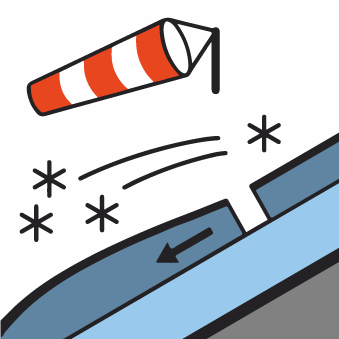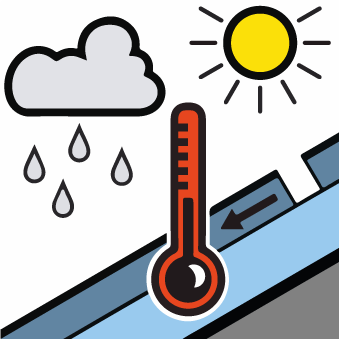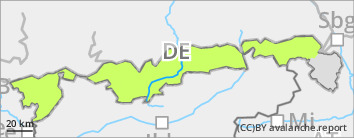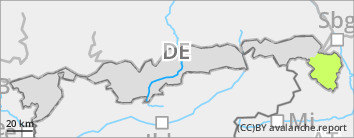
Danger level
 | 2000m |
| 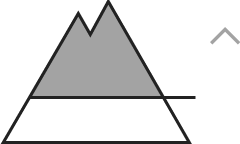 |
|  | ||||
|  |  |

Danger of falls on frozen snowpack surface
Avalanche danger is low. Wet snow can be problematic. On extremely steep sunny slopes, isolated small wet loose-snow avalanches can trigger naturally. At intermediate altitudes esp. on E/W facing slopes, at high altitudes on south-facing slopes, where the moisture reaches ground level, small glide-snow avalanches cannot be ruled out on steep grass-covered slopes.
Snowpack
At high altitudes, shallow snowdrifts have accumulated, lie deposited atop facetec, expansively metamorphosed surface and are poorly bonded with them. On shady slopes where snow is shallow, isolated layers of faceted crystals persist more deeply embedded inside the snowpack, but they are unlikely to trigger. On sunny slopes the ground is bare of snow up to high altitudes. The remains of the snowpack are melt-freeze encrusted in early morning. Due to solar radiation, bonding disperses in near-surface snow, it turns to firn snow and the snowpack becomes softer.
Tendency
Avalanche danger not expected to change significantly
